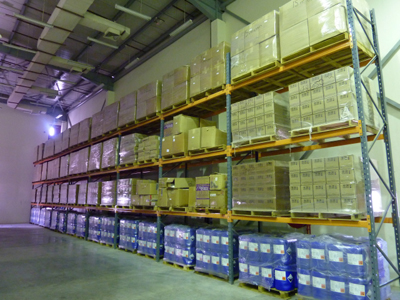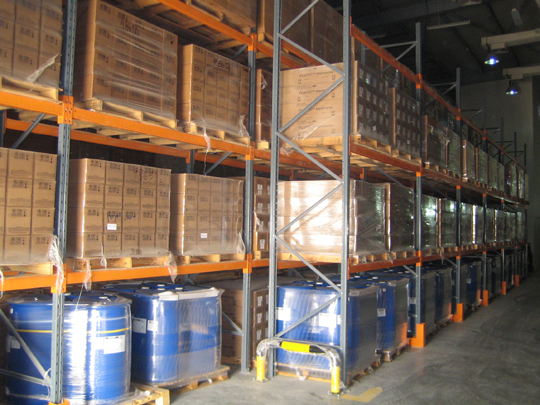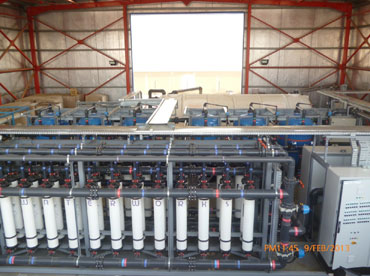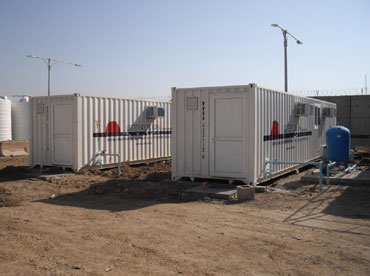Adsorption
Separation of liquids, gases, colloids or suspended matter from a medium by adherence to the surface or pores of a solid.
AOP
Advanced Oxidation Processes
BOD
Biological Oxygen Demand
A measure of the amount of oxygen required to neutralize organic wastes.
BOO
Build, Own, Operate
Brackish water
Water that is neither falls in the category of salt water, nor in the category of fresh water. It holds the middle between either one of the categories.
Btex
Group of volatile compounds: benzene, toluene, and xylene.
CIP
Clean In Place
COD
Chemical Oxygen Demand
The amount of oxygen (measured in mg/L) that is consumed in the oxidation of organic and oxidasable inorganic matter, under test conditions. It is used to measure the total amount of organic and inorganic pollution in wastewater. Contrary to BOD, with COD practically all compounds are fully oxidized.
Conductivity
The amount of electricity the water can conduct. It is expressed in a chemical magnitude. Please use also our information about TDS and conductivity.
Dewater
The separation of water from sludge, to produce a solid cake.
DAF
Dissolved Air Flotation
A procedure of induced flotation with very fine air bubbles or 'micro bubbles', of 40 to 70 microns.
BOT
Build, Own, Transfer
DI
De-ionized
Dissolved oxygen
The amount of oxygen dissolved in water at a certain time, expressed in ppm mg/L.
Effluent
The outlet or outflow of any system that deals with water flows, for an oxidation pond for biological water purification. It is the product water of the given system.
EA
Extended Aeration
Filter medium
The permeable material that separates solids from liquids passing through it.
FOG
Fat, Oil and Grease
Heavy metals
Metals that have a density of 5.0 or higher and a high elemental weight. Most are toxic to humans, even in low concentrations.
MCL Maximum Contaminant Level
Solids material that totally dissolves in water and can be removed by means of filtration.
Dissolved solids
MCL Maximum Contaminant Level
The maximum level of a contaminant allowed in water by federal law. Based on health effects and currently available treatment methods.
Osmosis
Water molecules passing through membranes naturally, to the side with the highest concentration of dissolved impurities.
pH
"Power of Hydrogen"
The level of alkalinity or acidity in the water
Potable water
Solids material that totally dissolves in water and can be removed by means of filtration.
Pre-treatment
Processes used to reduce or eliminate wastewater pollutants from before they are discharged.
Primary wastewater treatment
The removal of suspended, floating and precipitated solids from untreated wastewater.
Raw sewage
Untreated wastewater and its contents.
Raw water
Intake water before any treatment or use.
Reverse Osmosis process
The reverse osmosis (RO) process uses a semi-permeable membrane to separate and remove dissolved solids, organics, pyrogens, submicron colloidal matter, viruses, and bacteria from water. The process is called 'reverse' osmosis since it requires pressure to force pure water across a membrane, leaving the impurities behind.
Secondary treatment
The removal or reduction of contaminants and BOD of effluent from primary wastewater treatment.
SFEA
Submerged Filter Extended Aeration
SORF
Soluble Organic Reduction Filter
SS
Suspended solids classified as: large solids, grit, settleable solids, suspended solids, colloidial solids, dissolved solids
Suspended solids
Solid organic or inorganic particles that are held in suspension in a solution.
sVOC
Stable Volatile Organic Compounds
Tertiary treatment
Advanced cleaning of wastewater that goes beyond the secondary or biological stage, removing nutrients such as phosphorus, nitrogen, and most BOD and suspended solids.
TDS Total Dissolved Solids.
The weight per unit volume of water of suspended solids in a filter media after filtration or evaporation. Please use also our information about TDS and conductivity.
TFEA
Trickling Filter Extended Aeration
TH
Total hardness. The sum of calcium and magnesium hardness, expressed as a calcium carbonate equivalent.
TS
Total solids - the weight of all present solids per unit volume of water. It is usually determined by evaporation. The total weight concerns both dissolved and suspended organic and inorganic matter.
TSF
Tertiary Sand Filter
TSS
Total Suspended Solids
Total solids
All the solids in wastewater or sewage water, including suspended solids and filterable solids.
Trickling filter
A wastewater treatment unit that contains medium material with bacteria. The stream of wastewater is trickled over the medium and the bacteria break down the organic wastes. Bacteria are collected on the filter medium.
Turbidity
A measure of non-transparency of water due to the presence of suspended matter.
UF
Ultrafiltration
Ultraviolet oxidation
A process using extremely short wave-length light that can kill micro-organisms (disinfection) or cleave organic molecules (photo oxidation) rendering them polarized or ionized and thus more easily removed from the water.
UV
Ultraviolet - rRadiation that has a wavelength shorter than visible light. It is often used to kill bacteria and destroy ozone.
VOC
Volatile organic compound - synthetic organic compounds which easily vaporize and are often carcinogenic.
Wastewater
The spent or used water from a home, community, farm, or industry that contains dissolved or suspended matter.
Zero discharge water
The principle of "zero discharge" is recycling of all industrial wastewater. This means that wastewater will be treated and used again in the process. Because of the water reuse wastewater will not be released on the sewer system or surface water.






